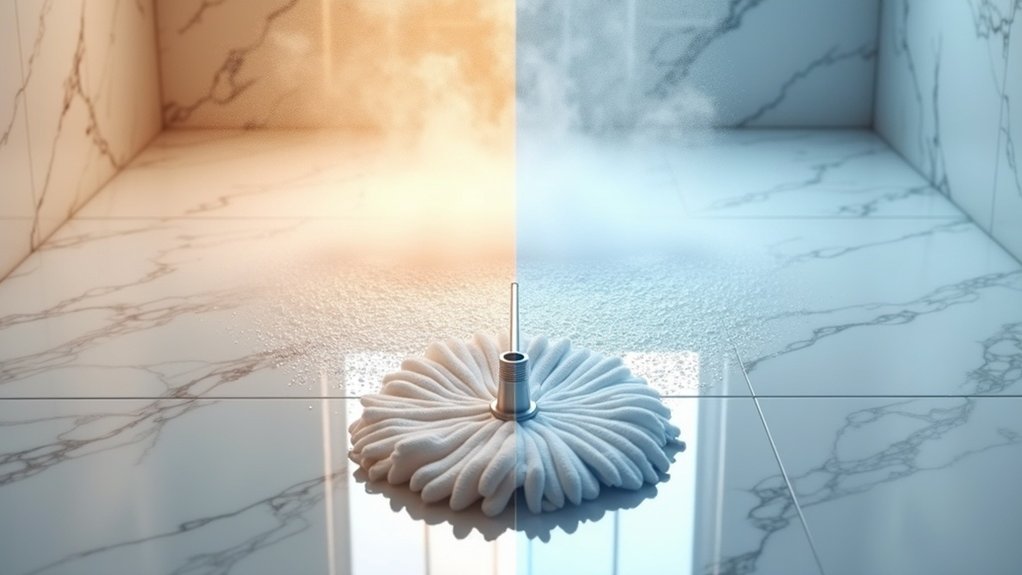Choosing between hot and cold water for floor cleaning transforms a mundane task into a science-backed decision that significantly impacts both cleaning effectiveness and floor longevity. The temperature debate extends beyond personal preference, involving complex interactions between chemistry, physics, and material science that determine ideal cleaning outcomes.
Hot water demonstrates remarkable superiority in tackling stubborn soils, particularly in greasy environments where testing reveals up to four times higher cleaning efficiency compared to cold water applications. This improved performance stems from heat’s ability to lower water’s surface tension, allowing deeper penetration into soil films while energizing surfactant molecules to detach oils more rapidly from surfaces. The thermal energy accelerates dissolution rates and amplifies micelle formation, creating powerful emulsification that breaks down even the most persistent grime. Scientific studies confirm that molecules move faster in heated water, creating increased kinetic energy that physically dislodges dirt particles more effectively than cold water’s slower molecular movement.
Hot water delivers four times the cleaning power against grease by energizing surfactants and accelerating soil dissolution rates.
Professional cleaners regularly observe a 40% reduction in cleaning times when utilizing hot water in pressure-washing applications, translating to significant labor savings in commercial settings. Industry experts like Lauren Houser from Zep Inc. emphasize that following instructions on floor cleaner labels ensures optimal results, as manufacturers specifically test their formulas for effectiveness at recommended temperatures.
Yet this cleaning powerhouse comes with notable restrictions based on flooring materials. Hardwood, laminate, and certain vinyl surfaces face serious risks from hot water exposure, including finish dulling, warping, and premature sealant failure. Wood’s natural tendency to absorb dampness intensifies with heat, causing expansion and contraction cycles that compromise structural integrity over time.
Manufacturers consistently specify cold or cool water compatibility for sensitive-floor cleaning products, recognizing that thermal stress accelerates deterioration of protective finishes.
The hygiene dimension adds another layer to temperature selection, as hot water contributes to reduced bacterial and viral counts while shortening drying times that minimize slip hazards. Kitchen floors bearing heavy grease accumulation and bathroom tiles harboring soap scum respond exceptionally well to hot water’s sanitizing properties, especially when combined with appropriate detergents that activate ideally at heightened temperatures.
Practical application requires matching water temperature to specific scenarios: greasy kitchen environments demand hot water’s degreasing power, while routine maintenance on delicate hardwood calls for cool water with pH-neutral cleaners. Tile and grout tolerate aggressive hot water treatments for deep cleaning, whereas sensitive vinyl requires careful temperature moderation.
Understanding these subtleties empowers homeowners and professionals to maximize cleaning efficiency while preserving valuable flooring investments through temperature-appropriate maintenance strategies.




